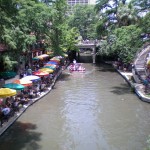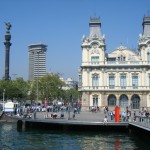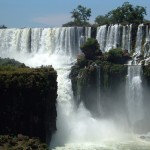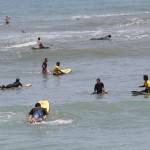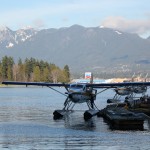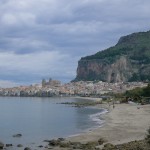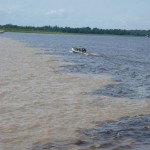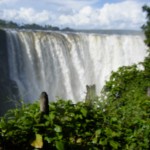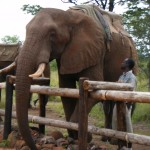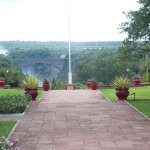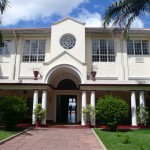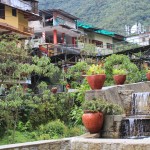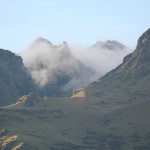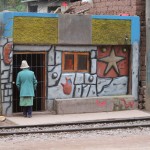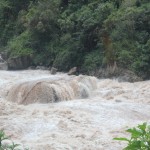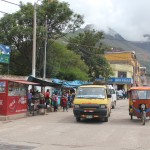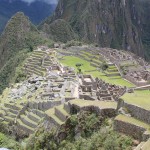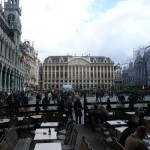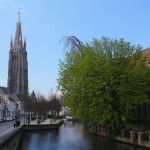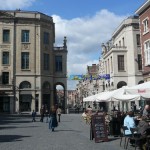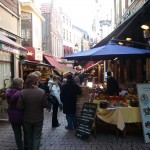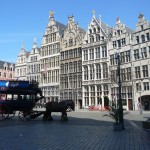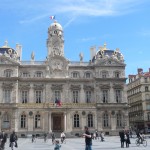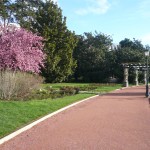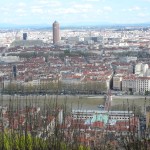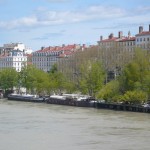I’m a person that needs to be near the water. There’s something that draws me to it that I can’t explain. I love lakes, waterfront promenades, boats, even fountains. Travel gives me a wonderful opportunity to explore and photograph water in many forms. Here are some of my favorite water photos, whichI feel capture the feeling of the destinations.
Archive for August, 2012
On the Water
Don’t Leave the Coffee Pot On!
The day that you take off for a trip can be hectic. In the rushing around, it’s easy to leave the house in a hurry without some important steps. Here are the last set of “Before You Go” tips – the day of departure.
1. Turn off/unplug unnecessary appliances – coffee pots, fans, hair dryers, toaster over, etc.
2. Check the status of your flight to make sure there are no changes, as well as the departure gate.
3. Adjust your thermostat to keep your electricity/heating bills lower while you are away. If it’s winter, don’t turn the heat all the way off – pipes could freeze and burst. If you turn air conditioning completely off in the summer, indoor plants might not be alive to welcome you home. If you have important plants, adjust your air conditioning accordingly.
4. For international flights, arrive at airport at least 2-3 hours before your flight; domestic flights arrive at least 1-2 hours before flight. IMPORTANT: Check with airport for suggested arrivals as this may change. Leave additional time for traffic, parking, and other issues that could delay you. Mornings, especially early in the week, are busy times for business travelers so allow for extra time at security if traveling during this time.
5. Make sure all items in your carry-on are allowed on board. Airlines require some items to be in your checked luggage. You can find a list of permitted/prohibited items on the TSA website. There’s also now a TSA app that you can download for updates.
6. Make sure you have not packed any important documents/necessities for your trip in the luggage you plan to check at the airport. This includes passport/identification, tickets or confirmations, medication, money, or anything with personal details on it. The same goes with items that are either monetarily or sentimentally high in value. If it’s something you that you can’t easily replace, or will cost you a lot to do so, keep it in your carry-on, assuming it’s allowed.
TweetBefore You Go – 1 to 2 Days
You’re trip is in just a day or two! It’s a very exciting and busy time. Here are some tips for the day or two before you take off.
1. Check your flight on the airline website to make sure there are no last minute time our routing changes. Generally you (or your travel planner) will receive notifications via email, but this just serves as an additional check. Most flights will also let you check in online 24 hours prior to your flight time.
2. Call airlines to confirm/add any special meal requirements. IMPORTANT: This must be done AT LEAST 24 hours before. If possible, do this at time of booking.
3. Check packing list and make note of things that still need to be packed.
4. Confirm arrangements made for your pets/home.
5. Check to see if you have any bills that are due while you are away or right after you come back and if so, pay them before you leave. If you are unsure of how much your bill will be, call the company and ask or check online.
TweetBefore You Go – 1 to 3 Weeks
You’re trip is just around the corner and you’re getting all excited! Here are some important things to think about that to help make sure you’re trip goes smoothly!
1. Make two copies of your passport and itinerary. Give one to someone back home; pack the other in your carry-on in a separate spot from your actual passport/itinerary.
2. Call credit cards, debit cards, and bank to let them know that you will be traveling overseas. For theft protection, many banks/card companies will freeze an account if they see overseas charges that they do not believe belong to the cardholder.
3. Copy down your credit card numbers/information and the international telephone number. Keep them in your luggage/carry separate from your credit cards.
4. Check voltage at destination ? you may need a voltage/outlet converter.
5. Arrange for your mail to be stopped or have someone pick up your mail for you.
6. Alert a neighbor/friend of your travel dates. This lets them know to be suspect of any activity around your house.
7. Have luggage tags on each piece of your checked luggage ? put at least your name and phone number on the tag, or use a business card. You may also want to put something distinguishable on your luggage if it is a common color.
8. Check the amenities of your hotels ? you can avoid packing items that the hotels already have. Check other hotel details such as if they have air conditioning and elevators, and pack accordingly.
9. Check the weather at the destination.
10. If you plan on using your phone – for calls, texts, email, or internet – while traveling, call your phone company to let them know and see if you need any additional features added to utilize overseas without incurring outrageous roaming charges.
TweetBefore You Go – 1 to 3 months
Part two in this series of “before you go” tips contains those items that I suggest doing one to three months before you travel.
1. Check luggage restrictions for flight/transportation. You may not think you need to do this so far in advance, but I recently stayed at a hotel that required a boat transfer, and they only let you bring carry on bags and personal items on the boat, and therefore to the hotel. We had to leave the rest of our luggage locked in their head office in town from where the boat departed. This is certainly something you want to know ahead of time – some of us actually purchased new carry on bags to make sure we could hold enough for our few days at the hotel.
2. Check with your bank about obtaining local currency. Some currencies could take a while to order because the bank doesn’t have them in stock at the branch. You want to have at least some local currency when you arrive at your destination ? most cab/transport companies will not accept US Dollars, and in some locations taxis do not take credit cards or charge a large fee for doing so.
3. Begin a general packing list (on the computer if possible). It doesn’t need to include specific items, just categories – i.e. jeans, long sleeve shirt, walking shoes, etc. Add things as you think of them. Keep this list for future reference. If it’s an electronic list, you can easily adjust it as needed.
4. Make arrangements for any pets/your house. It’s easy to get wrapped up in the planning and forget but if you plan to be away, you want to know that your pet and/or home will be taken care of.
5. Have a copy of all travel confirmations/confirmation numbers. Your travel planner should provide you with the confirmations when you book, but you want to make sure you can easily locate all of the essential details and that you have no major questions. If you look at this in advance, it provides time for us to answer any questions you may have.
TweetBefore You Go
I’m a list maker. I keep a lot reference lists for both myself and my clients. One of my favorite is my break down of “Before You Go” items. There’s often so much to remember prior to a trip that a lot can get lost in the shuffle. There are tasks that, if not done on time (or worse, at all), can wreak major havoc on a trip. I break this list down into increments – 4 to 6 months before the trip, 1 to 3 months before, 1 to 3 weeks before, 1 to 2 days before, and the day of departure. These items are in the form of a physical check list, and I highly recommend them to anyone planning a trip. I’m sharing here, in sections, starting with the furthest time period and moving closer to your travel date. I can also provide this as a full check list in PDF format, if anyone would like one.
Part 1: 4 to 6 Months before your trip (note, these are in no particular order, except they all fall in this time period):
1. Contact your travel planner if you haven’t already. The more time we have to plan, the more options that are available to you for flights, hotels, activities and the like.
2. Check your passport. If you’re traveling out of the country, unless it’s to a U.S. territory, you’ll need your passport, period. Some countries require your passport to be good for 30 or 60 days after you leave the country. If you’re passport is close to expiring, best to renew now. Some travel arrangements will require your passport details in order to book, so renewing it sooner than later is ideal.
3. Do you need a visa? Many countries that require a visa will provide it on arrival. Others require you to get it in advance, sometimes in person. Visa rules need to be examined carefully – some are good for multiple entries within a certain time frame, whereas others are valid for one entry and can only be provided within x number of days prior to your trip. Discuss this with your planner and make sure you are comfortable with the visa process before booking anything. We can help you with most of the process, but if it requires you to obtain it in person, there’s only so much we can do.
4. Check on any vaccines, medications, and other health suggestions/requirements for your destination. You can find these details on the CDC website. Most of the time, your GP can provide you with these shots and medications, and there are doctors who specialize in travel medicine as well. Some countries may require proof of a vaccination in order to enter the country. This is often true of yellow fever. When you get the vaccine, a card is provided that shows the date of vaccination and is signed by your physician. If it’s a required vaccination, you will need to carry this card with you when you travel.
5. Double check all travel documents and confirmations as soon as you receive them. If you have any questions, let your travel planner know immediately.
TweetSurprising Cities – Victoria Falls, Zimbabwe
Ok, I’ll admit it, I cheated a bit on this one as well. It was really the whole area that amazed me. The town itself wasn’t spectacular, but the whole experience was. Victoria Falls is the final (at least for now) in my surprising cities series.
Why I went: As part of a trip to Southern Africa. We wanted to see Victoria Falls and decided to go from the Zimbabwe side. It wasn’t in the orignal itinerary, but we added it in before we went.
What I expected: To be amazed by the falls and to enjoy the elephant back safari, but pretty much nothing else. I’ll admit some apprehension. There were travel warnings, and the week before I went the former Prime Minister’s wife was killed in a car accident, in which he was also injured. This was a bit of a scandal at the time, and didn’t help with the warnings to stay clear of the country.
What I found: A people who were so friendly and welcoming that it was hard to believe anyone could be that nice in the face of so much poverty that they can no longer accept their own currency; a country filled with landscape, adventure, wildlife, and a culture they manage to maintain despite such hardship; a sadness that underlies this culture when they tell you that it?s ok if you tip them in old shoes instead of money, because they?d be so thrilled to be able to put shoes on their family?s feet; the framework for a country that could be even more incredible given the opportunity, and that already offers an amazing experience for those tourists who are willing to give it a chance.
How long to spend there: You can easily spend three nights here. Depending on where you’re heading in from, it can be a bit of a journey so take the rest of the first day/evening to relax. I can’t recommend enough that you stay at the historic Victoria Falls hotel. You can actually see and hear the falls from the back dining patio. You could spend part of a day just exploring the hotel and its grounds. In addition to the falls, activities available in the area an elephant back safaris (highly recommended), Lion walks, game drives – both day and night options, river safaris, white water rafting – considered some of the best rapids in the world, and more . Given all of these options, anyone looking a decent amount of adventure could really spend numerous days here. If you want to get in the falls and an additional activity or two, I suggest three nights. I spent two nights and it was not enough time.
*Note: two cameras, luckily not expensive ones, got sacrificed due to the spray from the falls. (It was like a downpour – take the rain coats when the guides offer them to you.) Therefore, some photos are blurry. I used the best ones I could find.
Surprising Cities – Urubamba, Peru
It’s day four of Surprising Cities. I’m cheating on this one slightly. It wasn’t just this city that surprised me, but the whole area. The town of Urubamba was quite interesting, and the Sacred Valley as a whole was even more intriguing.
Why I went: As a jumping off point to visit Machu Picchu.
What I expected: Nothing of the town/valley itself. Truly, at least when it was first included in the itinerary, it was a means to an end.
What I found: In addition to discovering one of the best hotels I?ve ever stayed at (Tambo del Inka), Urubamba and the surrounding area have more culture and history in a few miles than some countries have between their borders. Without the hotel, you?d never know that a tourist has ever visited. I could have sat and watched people going about their daily life for hours ? farmers walking cattle down the street; local diners going in and out of eateries that have probably been run by the same family for generations; three wheeled taxis (think tuk-tuk style) traveling down the main road just as impatiently as they would in any North American city; mothers carrying their babies, wrapped in traditional Peruvian blankets, on their back. Colors abounded everywhere – the houses, the clothing, the cars, the signs were all in bold color. Scenery wise, the valley is tough to beat. The mountains rise to one side, while the Urubamba river runs, and sometimes races, along the other. It truly looks like something you’d see in a movie about authentic life in Peru.
How much time to spend: You must give yourself at least two nights. While it’s not particularly difficult to access, you do fly into Cusco and then get a transfer into the valley (the transfer takes just over an hour). Take this first day to get adjusted to the altitude – even though it’s a Valley, it’s still at about 8,000 feet. If you’re heading to Machu Picchu, which is why most people visit, you’ll need a full day for that. Getting there involves a train to the equally fascinating town of Aguas Calientes, and then a van transfer for approximately 30 minutes, so the day trip to Machu Picchu is a busy one. You can also add another day to spend time seeing the rest of the Valley. Though not as famous as Machu Picchu, the region is known for its salt flats, which travelers that have some extra time like to visit.
Surprising Cities – Brussels
It’s part three of my surprising cities series. Today’s city is Brussels. Brussels wasn’t surprising in the “I thought it would be crappy but I really liked it” kind of way, but more so in the way that it appealed to me. It’s tough not to like a city known for it’s beer, frittes, chocolates, and waffles, but other than expanding my waistline, I wasn’t sure what type of impact the city would have on me.
Why I went: I had a conference in Lyon (another surprising city, discussed in my last blog), and since I rarely travel internationally without making a decent length trip out of it, I added in several other destinations in Europe. I?d heard decent things about Brussels and thought I?d give it a go. Confession: I have an MS in International Marketing and am a big international business geek, so that fact that it’s considered the “capital” of the EU made did influence my decision to go there.
What I expected: I expected to like it well enough. I didn?t expect to be as enamored with it as I was.
What I found: I fell in love with the city?s squares and cobblestone walkways. It?s really that simple. Maybe I expected it to be more business-centric. Brussels just felt very authentic. There?s plenty of tourism, of course, but I never felt particularly touristy, minus the fact of course that I don?t speak French or Flemish. Brussels somehow felt homey and alive at the same time. The frites, beer, waffles and chocolate didn?t hurt, either. You know what else is great about Brussels – it’s so easily accessible. One of my closest friends is from England and her and her now husband flew in (or trained in, but I think they flew) to visit for a couple of nights while I was there. They said it was super easy and affordable. I flew into Paris and then caught the train right from Charles de Gaul airport up to Brussels. Took less than two hours. Again, very simple.
How much time to spend: Brussels offers easy day trips to the Belgian cities of Ghent, Bruges, Antwerp, and the college town of Leuven, which is definitely worth a stop. (I did not, unfortunately, make it to Ghent but I’ve heard good things from multiple people). You can spend several days in Brussels itself, just walking the streets, enjoying the shops, restaurants, and people watching. It’s also home to a large number of museums, some rather unique. This site can tell you much more about the 80+ museums in Brussels than I can. You could then spend a couple of days making day trips to the cities mentioned above. Bruges is probably worth the better part of a day, whereas you could probably combine Antwerp and Ghent into a day excursion – they’re stops along the same train route. Leuven is a good half day trip and not in the same direction as the others, so would be done on its own. There are also (long) day trips available to Luxembourg or Amsterdam, the latter being quite a long day, though do-able and worth it if you’ve never been to Amsterdam. As mentioned earlier, Brussels is also less than two hours from both Paris and London by train. Not that I suggest doing either in a day as there is entirely too much to see, but if you really wanted to you could, or you could do as I did and start in Brussels and head out on your European vacation from there.
Surprising Cities – Lyon
Lyon, France is city number two in my surprising cities series. It is the only city I included in my initial itinerary as a main stop on the trip. I had a conference here, and actually formed my trip around the conference (traveling to Brussels, Paris and Geneva as part of the trip). Still, I consider Lyon a surprising city because while I planned to go there, I didn’t plan to be so enthralled with it. It was the least anticipated stop, a “since we have to go to Lyon might as well make a bigger trip out of it” type of thing.
Why I went: Every year I have a major industry expo in a different part of the world. As I mentioned, that particular year it was in Lyon.
What I expected: To attend the conference and wander around Lyon a little bit in my free time. I definitely expected a smaller, more industrial type of city.
What I found: A large, vibrant city with Soane and Rhone rivers running through it, separating the two sides of the city into two distinct sections, each worth a visit. The energy in the city was almost palpable. Its numerous squares created gathering spots for locals, tourists, and street performers at every hour of the day and night. Overlooking this excitement was the city?s own Notre Dame Cathedral, accessible by funicular (tram-like system up the side of the hill) or a pretty active walk, and absolutely worth seeing for the view alone. Across from the convention center was a gigantic park where locals jogged, picnicked, played lawn games – it even had a petting zoo. Much to my surprise, Lyon is also considered the gastronomic center of France. You won’t leave hungry!
How much time to spend: You can easily spend three to four days in Lyon alone, not including it?s easy access to several of France?s most notable wine regions.
